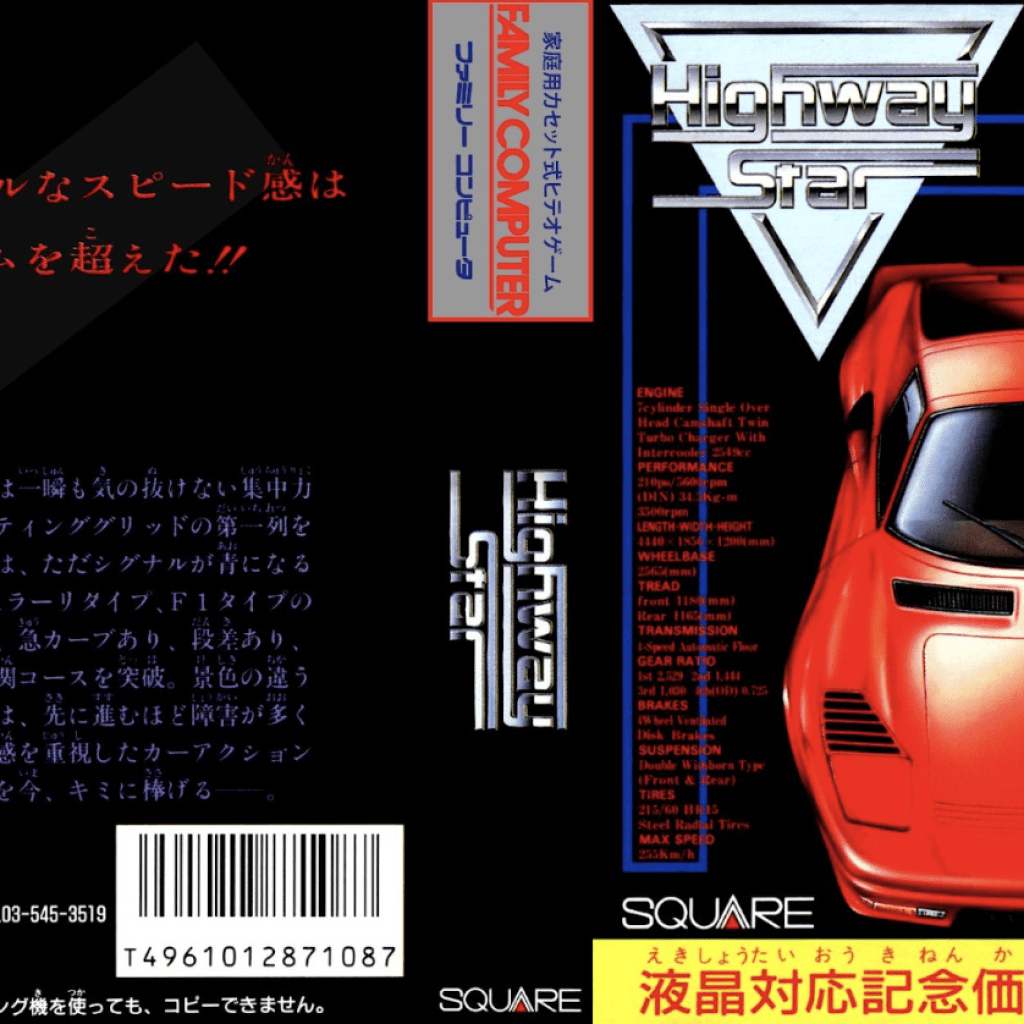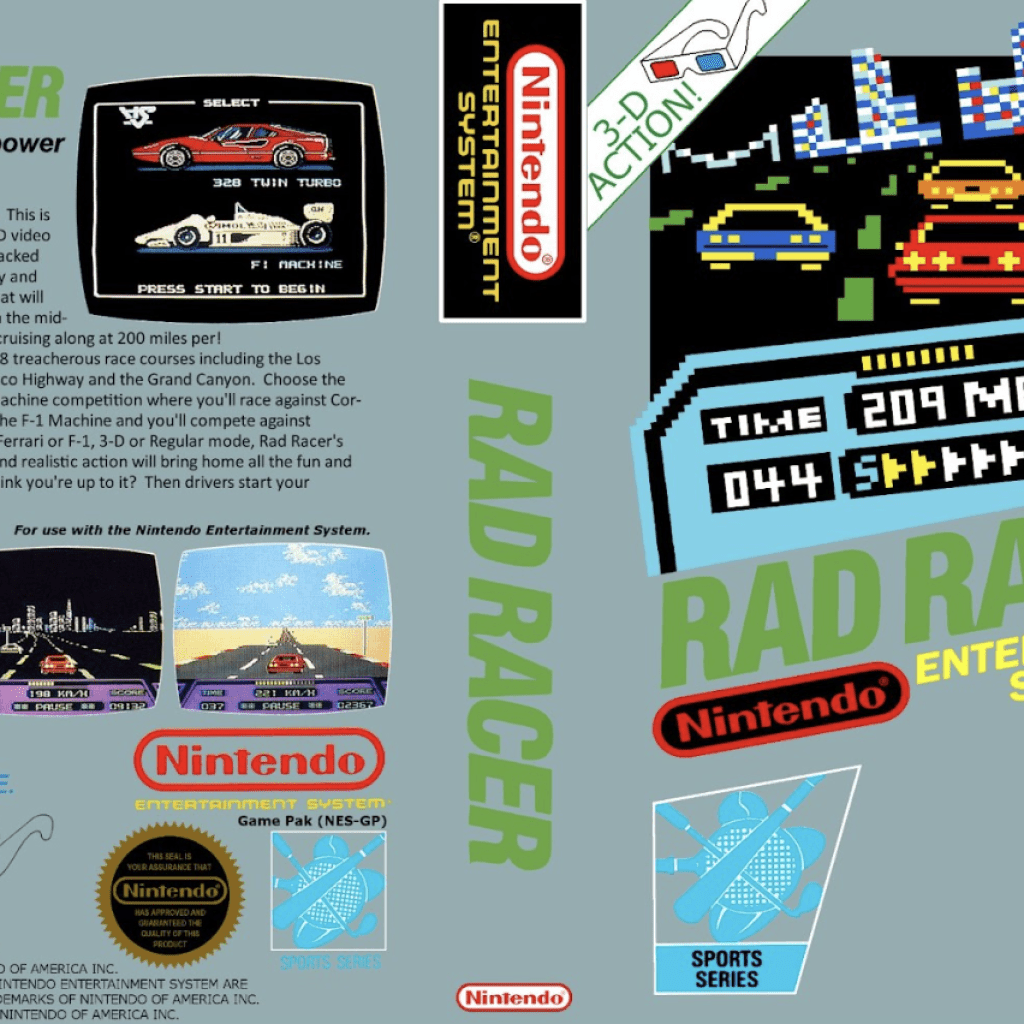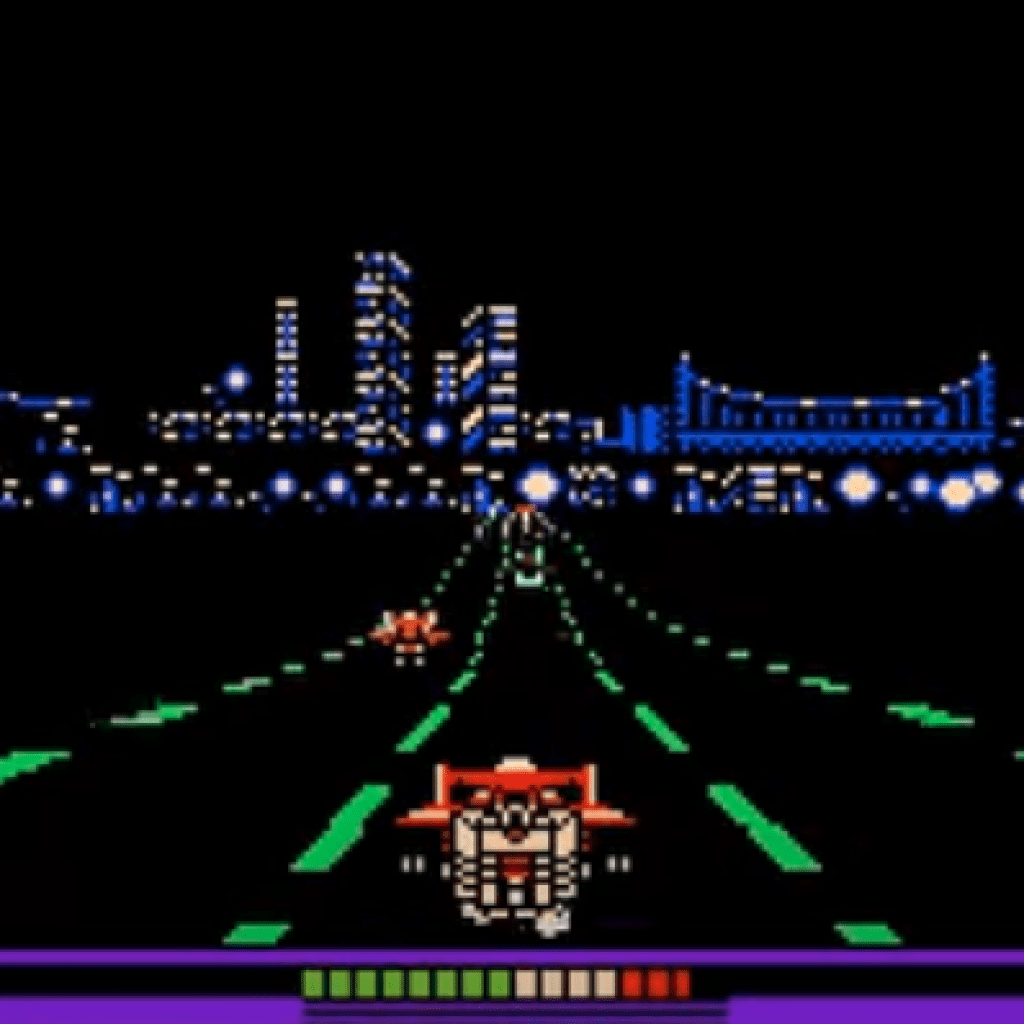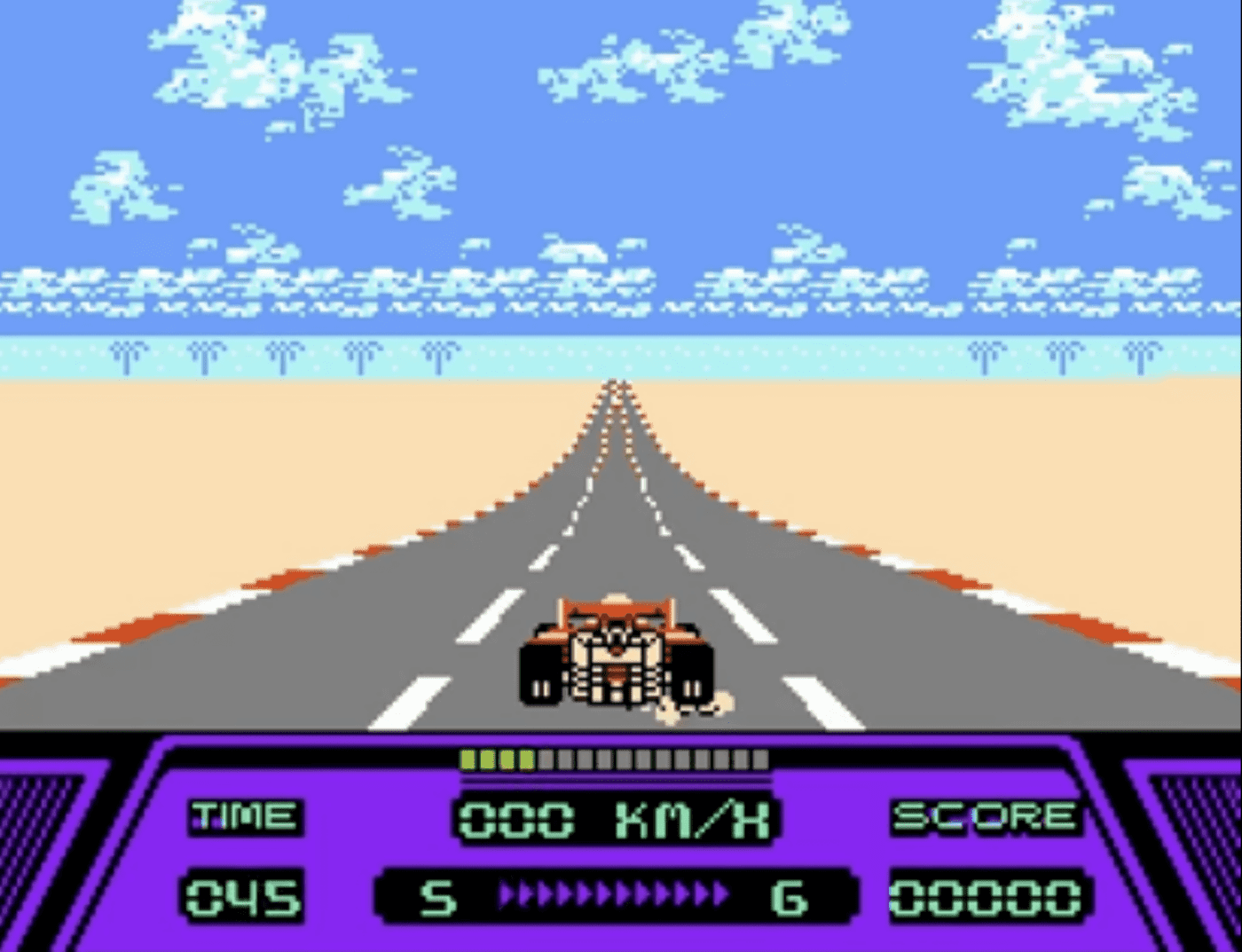Just last month, the sixteenth mainline entry in Square-Enix’s long-running Final Fantasy series, Final Fantasy XVI, brought a sword and sorcery role playing epic to the PlayStation 5. Since the release of the first game in the series in 1987 on the Famicom (better known as the Nintendo Entertainment System outside of Japan) Square has spent the last few decades cultivating a reputation for RPG mastery, creating games that more Often than not feature graphically-impressive magic spells, valiant heroes, and epic tales. That reputation only grew when the company merged with fellow game developer Enix, bringing both Final Fantasy and Enix’s treasured Dragon Quest series under one roof as Square-Enix.
But before Final Fantasy, before all the swords and sorcery, before the company that was to grow into Square-Enix truly found its footing, Square produced a racing game.
Known as Highway Star in Japan, Rad Racer is a 1987 racing game published for the NES in late 1987. The game features a third-person, behind-the-car viewpoint that allows players to weave in and out of traffic as they race through eight stages based on recognizable locations like Athens, Greece and San Francisco, California. Players are given the choice between a Ferrari 328 Twin Turbo or an “F1 Machine” that is a generic Formula One car. In each stage, players have to hit certain check points within a time limit that is constantly counting down on the dashboard. However, once time runs out players will continue to coast until their speed drops to 0 kilometer per hour meaning that crossing a checkpoint during this coasting phase will allow the race to continue.


At the time of its release, Rad Racer drew comparisons to Sega’s Out Run arcade racing game released a year earlier in 1986. Both games feature Ferraris as well as a similar play style and perspective, though Out Run’s superior hardware blows Rad Racer’s graphics right off the race track. For starters, Out Run used Sega’s “super scaler” technology to have the sprite-based graphical elements actually increase and decrease in size, creating a more realistic 3D effect as road signs, trees, and other cars gradually grew in shape as they whizzed by the player car. By contrast, the sprites in Rad Racer pop in rather than smoothly scale. As the other cars on the road get closer to the player car, you can see them change from one sprite to another to suggest the idea that they’re getting closer.
While graphically challenged by its arcade contemporaries, Rad Racer did provide added immersion with the ability to play the game in 3D. This was achieved by using the Japan-exclusive Famicom 3D System, which displayed a stereoscopic 3D image through a pair of special glasses. Outside of Japan, Rad Racer achieved a similar effect with a pair of anaglyph 3D glasses, the same kind of red and blue-lensed paper glasses you might have worn to see a 3D movie in the ‘80s.

Rad Racer proved extremely popular in the United States, leading to U.S.-exclusive sequel aptly named Rad Racer II in 1990. The original game even made an appearance in the part-Hollywood film part-Nintendo infomercial, The Wizard (1989) during the infamous Power Glove scene.
These days, Rad Racer’s success feels relatively short-lived as Square moved onto primarily creating games with fantastic quests rather than adrenaline-pumping races shortly after the first game hit store shelves. But for a time in the late ‘80s, Squaresoft spun a different kind of magic reserved for those daring enough to speed down a track and snatch victory from time itself.

